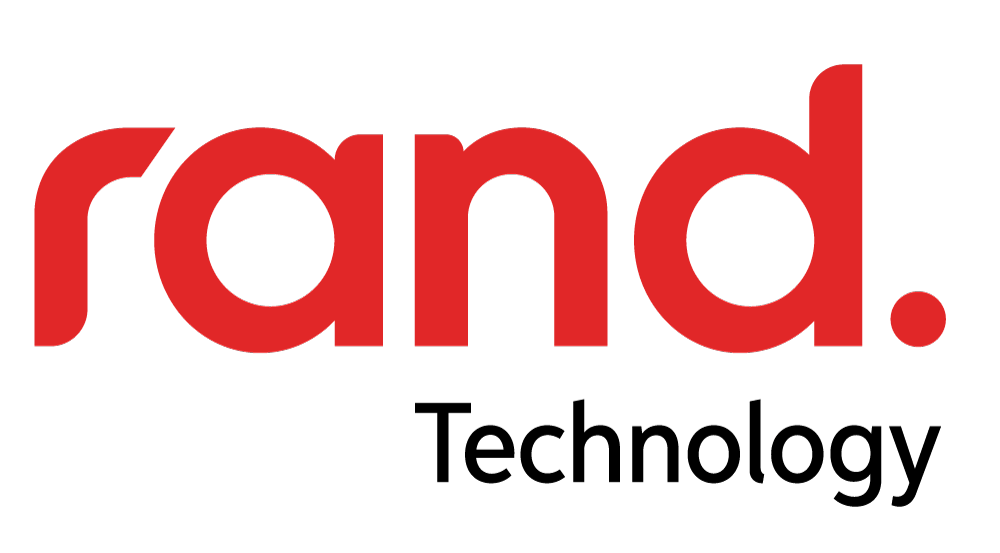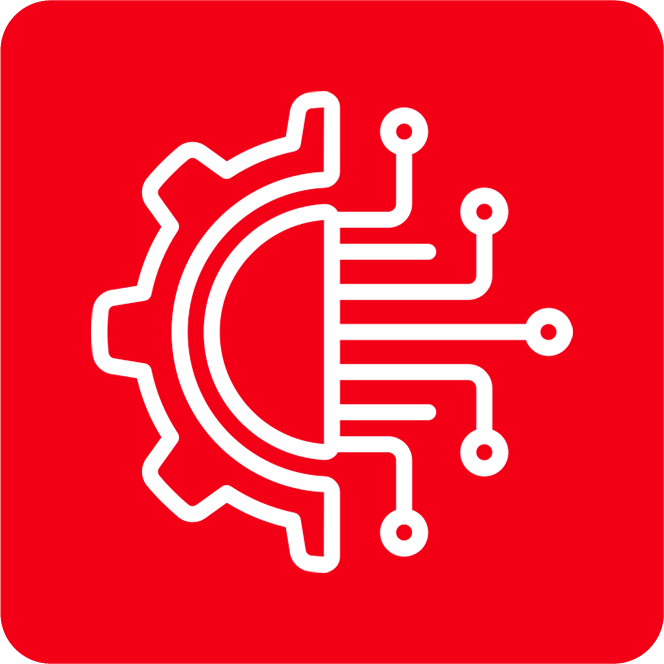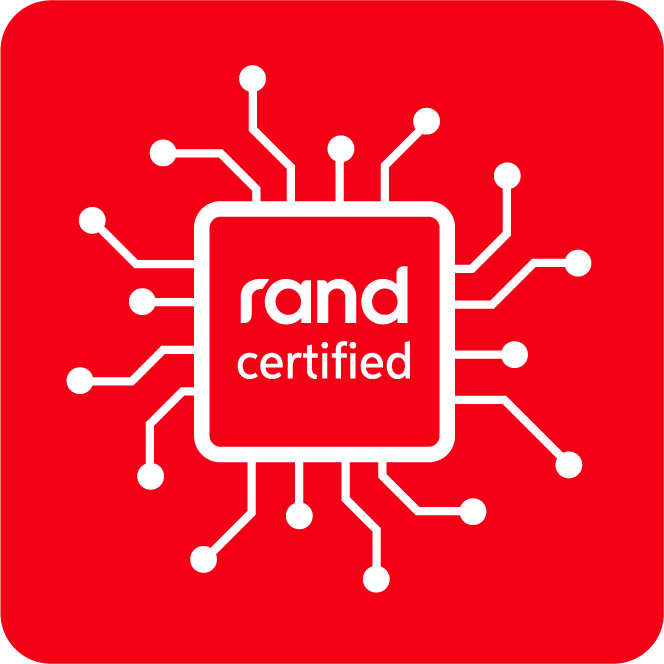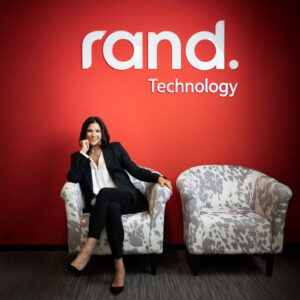At Rand Technology, leadership doesn’t follow a traditional script. It doesn’t always wear a suit, it doesn’t need to raise its voice, and it doesn’t believe that success should come at the cost of authenticity. In a male-dominated industry like electronics distribution, the women of Rand have risen to leadership roles not by conforming to outdated models but by reshaping them. What emerges is a story of human connection, resilience, balance—and better business.
This isn’t just a celebration of achievement; it reflects the systemic hurdles women have had to overcome—and continue to face—and is a testament to what’s possible when leadership looks like the communities it serves. From early mentorship to boardroom breakthroughs, from battles with imposter syndrome to bold innovations grounded in empathy, the women of Rand are paving new roads for those behind them while driving the company forward with strategic vision and humanity.
We spoke with several of Rand’s women leaders and James Stannard, Director of Sales for EMEA, to understand how authentic leadership, diversity, and a culture of empowerment have shaped their careers, the company, and the industry itself. Their responses highlight not only the challenges women have faced but also the opportunities they’ve created for others. It’s a story of transformation—not just of careers but of corporate culture.
I. The Journey to Leadership
No two leadership paths are the same. However, one common thread runs through the journeys of Rand’s leaders: the influence of mentors, the resilience required in male-dominated environments, and the empowering effect of seeing others like themselves succeed.
“For most of my career, I worked in male-dominated environments. I had to adapt to tough conditions and leadership styles that, over time, felt normal—maybe because I’m strong and resilient by nature,” says Agnieszka Nakabayashi, Account Executive based in France. “It wasn’t until I started working under a female leader that I saw a completely different approach—more human, more empathetic. And suddenly, work became interesting! Like a journey!”
Many of Rand’s women share the discovery of empathy as a strength, not a weakness. This revelation often marks a turning point in their careers, a redefinition of leadership on their own terms.
For Kathy Tan, Director of Sales APAC, China, her career began at a women-led fashion and garments company. “I was profoundly influenced by the rigor, resilience, and radiance of my female executives,” she reflects. “Their leadership styles, rooted in both traditional and evolving feminine strengths, became a blueprint for my own approach.”
Kathy’s experience illustrates that early exposure to empowered female leaders can set a powerful precedent.
Many women spoke about their career arcs not as linear progressions but as evolving identities. Every step forward required managing more than workloads—it required negotiating identity, expectations, and systems that weren’t built with them in mind.
Alaina Andino, Global Solutions and Services Programs Manager credits a long-time mentor who saw her potential at just 23 years old. “My mentor taught me everything they could. Their belief in me made me want to do better. That mentorship laid the foundation for my growth,” she says. However, Alaina also acknowledges the continued uphill climb in male-heavy meetings where conversations often bypass women entirely. “I’ve had to work to redirect conversations, to insert myself. Being led by a female CEO now makes me feel like I already have that spot at the table.”
The shift was seismic for Fabienne Michel, who had spent 17 years in the brokerage industry before joining Rand. “My opinion of the industry was that it was sexist and heavily reliant on a masculine culture. I worked my way up but ultimately got fed up with the machismo.” What changed everything for her was hearing Jennifer Strawn and Andrea Klein speak. “They commanded authority but gave women a voice. It was incredibly refreshing. At Rand, I was given immediate respect just for being me.”
That sense of validation stands in stark contrast to her earlier career. “We live in a male-dominated world, everything from healthcare to taekwondo—the priority is male. There are obvious biological differences, and they matter, but nobody speaks to those. There’s still no place for women to ‘have it all.’ We still have to fight.”
Trisha Marlow, now Purchasing Supervisor, met Andrea Klein at age 28 and joined Rand as a buyer. She has since witnessed the transformation of Rand from a single office in Irvine to a global player. “Andrea leads by example and gives women real opportunity. Our CFO is a woman, and the head of our Netherlands office is a woman. You don’t just see women in leadership here—you see them empowered.”
These journeys show that the presence of women at the top isn’t accidental—it’s the result of intentional hiring, an inclusive culture, and a CEO who believes in growing leaders from within.
And what about the men? James Stannard, Director of Sales for EMEA, was recruited by Andrea and shares a different but aligned experience. “While the tech industry at large has its challenges, toxic masculinity is especially common in the independent distribution space. It often mirrors a ‘Wall Street broker’ mentality—transactional, aggressive, and short-term focused. At Rand, our culture is fundamentally different. We prioritize partnership over posturing. We’re here to help clients succeed, not just close a deal. That kind of long-game thinking only works when you build genuine, trust-based relationships—and that requires a different kind of leadership.”
II. What Authentic Leadership Really Means
Authenticity is a powerful theme running through every one of these stories. At Rand, it’s not just a buzzword—it’s a business strategy. And for these women, authenticity isn’t just about being honest—it’s about being whole.
“To me, authentic leadership means staying true to yourself and leading with your values,” says Agnieszka. “Authenticity builds trust, engagement, and a sense of purpose within a team. When people can be themselves, they make better decisions, take ownership, and feel like they truly belong.”
Kathy Tan puts it in the context of business philosophy. “Authentic leadership means genuine self-expression and moral integrity while fostering trust and collaboration,” she explains. “It’s not about perfection—the alignment of values, actions, and impact. That’s what drives real performance.”
She references John Maxwell’s book The Five Levels of Leadership, noting that embracing authenticity transformed her leadership. “It fosters deeper connections, greater resilience, and stronger impact.”
Alaina’s experience is both personal and deeply tied to the stakes of her work. “The technology we supply goes into MedTech and other critical industries that our friends and families lean upon. If you don’t bring your authentic self to the table, what do you have to lean on? This isn’t an industry where you get second chances. You have to show up as yourself and do the right thing.”
Andrea Klein, Rand’s founder and CEO, embodies this philosophy. “Embracing authenticity has empowered me to build stronger, more meaningful connections with my team and our clients. In my early years as CEO, I found it challenging to provide honest feedback because I feared hurting people’s feelings. However, as I evolved, I realized that by not being forthright, I was not only hindering individual growth but also devaluing the contributions of our real producers. Learning to communicate openly, with respect and clarity, transformed my leadership style.”
Authenticity is a two-way street. You can’t expect people to be themselves if you’re not doing the same. You must show up as a whole person—especially when asking people to bring their best to high-stakes work.
Authenticity also brings results. “It’s led to higher engagement, increased trust, and better teamwork, driving us toward our collective goals with a shared vision. Moreover, being authentic has enhanced my decision-making, as I rely on a value-driven approach to navigate the complexities of our industry.” It’s just good business.
Fabienne’s perspective adds nuance. “Even though our leadership is female at Rand, leadership still has traits we assign to men. Career-first, 24/7 availability. Women are judged differently. Unlike men who can have a work and family life due to societal characteristics that allow them to separate their work-life balance like it is ok not to be home for school events or to pick up the kids, women are looked down upon for maternal traits or responsibilities. Women have no place to have it all; we still have to fight. There are still problems with the wage gap and available opportunities for women.
I have found a place much more protected or sheltered from these male-female differences in responsibilities. When you have someone like Andrea to fight for you.”
James agrees that authentic leadership has been undervalued in business. “Empathy, nurturing, and long-term thinking are often seen as soft. But at Rand, they’re strengths. They’re part of why we’ve succeeded against much larger competitors.”
Across every response, one thing is clear: when women lead as their authentic selves, they don’t just survive—they thrive. And they bring others with them.”
III. Breaking Barriers, Redefining Norms
Women navigating the path to the C-suite have always encountered visible and invisible barriers. But at Rand, these women are actively breaking through them—and, more importantly, building bridges for others.
Alaina recalls being silenced early in her career. “I was told to sit and shut up. But as I grew more confident, I brought my own color and flair into meetings. I realized my voice mattered. I made sure it was heard.” That decision to speak up didn’t just change her standing—it also signaled to others that they could too. “Now work with various groups like Women in Electronics (WE) to help women learn to find their voices. Because if I had someone to tell me that early on, things might’ve moved faster.”
Trisha echoes that sentiment: “Know your value, know your worth. Speak with passion; speak with authenticity. People will listen.” She believes success starts with internal confidence—but is sustained by external support systems. When your leaders believe in you, when they listen, you gain the courage to push forward.
Kathy emphasizes that conformity isn’t the way forward. “Your unique strengths and perspectives are your greatest assets. Stay true to your authentic self while building genuine relationships.” That authenticity, she notes, is more potent than the mimicry of outdated models. “When we lean into who we are instead of who we think we should be, that’s when leadership becomes transformative.”
Companies, however, have an equally important role to play. “Across the industry, we need to eliminate unconscious bias, provide mentorship, and offer flexible work environments,” says Kathy. “At Rand, that’s already happening. But that’s not the industry norm—yet.”
Fabienne takes the critique further. “A man is automatically given credibility and authority by wearing a tie. A woman has to claw for it. That needs to change.” She argues that even when progress is made, it often comes with a cost. “We’re still judged for things like motherhood, emotion, or being ‘too soft’—when those are our superpowers.”
Still, progress is visible. “There’s been a huge shift in the past 15 years,” Alaina says. “Women have entered leadership at every level. There’s still work to do, but the momentum is real.”
And that momentum isn’t just internal. Trisha recalls a time during the 2018 MLCC passives shortage when she was invited on-site to help a supplier team problem-solve. “My contact turned out to be a woman. Over dinner, we talked about motherhood, careers, and resilience. Nearly a decade later, she has changed various roles and made a few company moves, but we have stayed in touch as colleagues and friends.” That’s not just networking—that’s sisterhood.
IV. Why Diversity Isn’t Optional—It’s Good Business
While the ethical case for gender equity is clear, the business case is just as strong. Diverse leadership doesn’t just feel right—it performs better. And Rand’s women see it play out daily.
“More women in leadership brings better balance, fresh perspectives, and smarter decisions,” says Agnieszka. “Diversity creates harmony, and that’s when teams do their best work.”
Kathy adds, “Women reduce blind spots in risk assessment and bring agility to crisis response. In my career, I’ve seen women start their own businesses and lead them to dominate the industry. That’s not just diversity—it’s innovation.” She points to emotional intelligence as a differentiator. It helps with negotiation, conflict resolution, and team building. These aren’t soft skills—they’re power skills.
Alaina connects it to strategic advantage. “The more input you have, the better the outcomes. At Rand, I’ve felt supported as a woman in a way I haven’t experienced elsewhere. That support leads to better performance. It gives you the confidence to push boundaries.”
Trisha agrees. “When you build real relationships, you can solve real problems. We got a late-night text about a top-tier OEM order during the pandemic. Because of the trust we’d built, we could log on with a supplier to confirm the order simply because we had a relationship in which we could directly communicate with those who needed to be involved. That responsiveness—that’s our edge.”
James adds another angle: long-term trust. “If we were just here for the deal, we wouldn’t still be leading after 33 years. The care, the culture, the long-term thinking—it all adds up. It’s not about volume; it’s about value. And diversity brings more of it.”
Andrea puts it plainly: “Authentic, inclusive leadership isn’t just a moral decision—it’s a competitive advantage.”
V. A Better Future: What’s Next?
Looking ahead, Rand’s leaders aren’t satisfied with current progress—they’re aiming higher.
Kathy believes companies must treat inclusion as a strategy. “Diversity should be seen as a core business lever, not just a compliance checkbox. Inclusive cultures drive innovation and resilience.” She envisions leadership pipelines that are deliberate and diverse: “Mentoring programs, executive training for women, family-first flexibility—these should be standard.”
Alaina doesn’t believe in silver bullets. “It’s about showing up daily and bringing people in. I’ll continue bringing diverse voices into Rand. That’s how we make space for conversations that change culture.”
Trisha sums it up with simplicity and conviction: “Rand cares. That’s the takeaway. It’s not just something we say—it’s something we live.”
Fabienne’s final words are both sobering and urgent: “More women would be in leadership if the world revolved around the idea that ‘yes means yes, and no means no.’ That would be a world where boundaries are respected—and voices are heard the first time.”
And James? He sees his role as continuing to advocate from the inside. “My job is to ensure our female colleagues are elevated, respected, and promoted—without question marks. Not because they’re women, but because they’re the best at what they do.”
At Rand Technology, leadership is defined not by power but by purpose, not by hierarchy but by heart. The women of Rand—and the men who stand with them—are rewriting the narrative of what leadership looks like. It’s human, courageous, and driven by values.
This isn’t just a story about women in the C-suite. It’s a story about what happens when people are given the space to lead as themselves. It’s a story of better businesses, stronger teams, and a more equitable future.
When authenticity is allowed to lead, empathy becomes strategy. When diversity is prioritized, resilience becomes culture. And when women are empowered, everyone rises.
At Rand, that future isn’t a goal. It’s already underway.


















